Related Research Articles
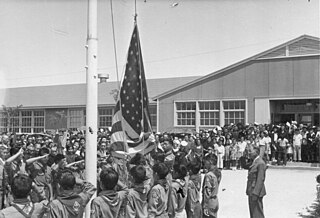
During the early years of World War II, Japanese Americans were forcibly relocated from their homes in the West Coast because military leaders and public opinion combined to fan unproven fears of sabotage. As the war progressed, many of the young Nisei, Japanese immigrants' children who were born with American citizenship, volunteered or were drafted to serve in the United States military. Japanese Americans served in all the branches of the United States Armed Forces, including the United States Merchant Marine. An estimated 33,000 Japanese Americans served in the U.S. military during World War II, of which 20,000 joined the Army. Approximately 800 were killed in action.
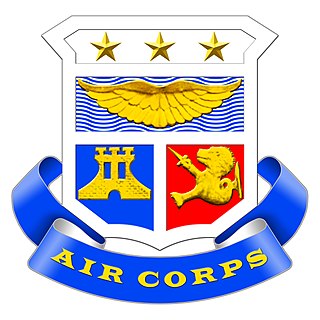
The Philippine Army Air Corps was created in 1935 as the air component of the Philippine Army. It was the predecessor of the Philippine Air Force, created in 1947.
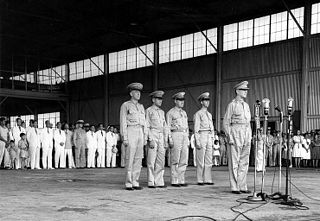
United States Army Forces in the Far East (USAFFE) was a military formation of the United States Army active from 1941 to 1946. The new command's headquarters was created on 26 July 1941, at No. 1, Calle Victoria, Manila, Luzon, the Philippines, with General Douglas MacArthur as commander. The Chief of Staff was Brigadier General Richard K. Sutherland and the Deputy Chief of Staff was Lieutenant Colonel Richard J. Marshall. The core of this command was drawn from the Office of the Military Advisor to the Commonwealth Government of the Philippines.
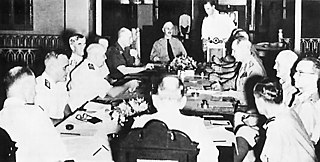
The American-British-Dutch-Australian (ABDA) Command, or ABDACOM, was the short-lived supreme command for all Allied forces in South East Asia in early 1942, during the Pacific War in World War II. The command consisted of the forces of Australia, the Netherlands, United Kingdom and the United States. The main objective of the command, led by General Sir Archibald Wavell, was to maintain control of the "Malay Barrier", a notional line running down the Malay Peninsula, through Singapore and the southernmost islands of the Dutch East Indies. ABDACOM was also known in British military circles as the "South West Pacific Command", although it should not be confused with the later South West Pacific Area command.

The 442nd Infantry Regiment was an infantry regiment of the United States Army. The regiment is best known as the most decorated in U.S. military history and as a fighting unit composed almost entirely of second-generation American soldiers of Japanese ancestry (Nisei) who fought in World War II. Beginning in 1944, the regiment fought primarily in the European Theatre, in particular Italy, southern France, and Germany. The 442nd Regimental Combat Team (RCT) was organized on March 23, 1943, in response to the War Department's call for volunteers to form the segregated Japanese American army combat unit. More than 12,000 Nisei volunteers answered the call. Ultimately 2,686 from Hawaii and 1,500 from U.S. internment camps assembled at Camp Shelby, Mississippi in April 1943 for a year of infantry training. Many of the soldiers from the continental U.S. had families in internment camps while they fought abroad. The unit's motto was "Go for Broke".

John Fujio Aiso was an American nisei military leader, lawyer and judge. Aiso was the Director and head instructor of the Military Intelligence Service Language School, and the highest-ranking Japanese American in the U.S. Army during World War II. He was also the first Japanese American appointed as a judge in the contiguous United States.

Camp Savage is the former site of the U.S. Military Intelligence Service language school operating during World War II. The school itself was established in San Francisco, but was moved in 1942 to Savage, Minnesota. The purpose of the school was to teach the Japanese language to military personnel and civilians involved in the war effort. This skill could then be used to interrogate prisoners of war, translate captured documents, serve as interpreters with Japanese civilians, and aid in the American war effort. The program was later moved to Fort Snelling in St. Paul, Minnesota.

The Counter Intelligence Corps was a World War II and early Cold War intelligence agency within the United States Army consisting of highly trained special agents. Its role was taken over by the U.S. Army Intelligence Corps in 1961 and, in 1967, by the United States Army Intelligence Agency. Its functions are now performed by its modern-day descendant organization; United States Army Counterintelligence. The National Counter Intelligence Corps Association (NCICA), a veterans' association, was established in the years immediately following World War II by Military Intelligence agents who had served in every area of military and domestic operations. The organization meets annually. Its newsletter, the Golden Sphinx, is published quarterly.

The Go for Broke Monument in Little Tokyo, Los Angeles, California, commemorates Japanese Americans who served in the United States Army during World War II. It was created by Los Angeles architect Roger M. Yanagita whose winning design was selected over 138 other submissions from around the world.

Robert Charlwood Richardson Jr. was born in Charleston, South Carolina, on October 27, 1882, and was admitted as a cadet at the United States Military Academy on June 19, 1900. His military career spanned the first half of the 20th century. He was a veteran of the 1904 Philippine insurrection, World War I, and World War II. He commanded the U.S. Army, Pacific during the height of World War II in 1943 until his retirement in 1946. During that time he was also the military governor of Hawaii and Commanding General of U.S. Army Forces in the Pacific Ocean Areas.

A series of events led to the attack on Pearl Harbor. War between the Empire of Japan and the United States was a possibility for which each nation's military forces had planned for after World War I. The expansion of American territories in the Pacific had been a threat to Japan since the 1890s, but real tensions did not begin until the Japanese invasion of Manchuria in 1931.

The Military Intelligence Service was a World War II U.S. military unit consisting of two branches, the Japanese American unit and the German-Austrian unit based at Camp Ritchie, best known as the "Ritchie Boys". The unit described here was primarily composed of Nisei who were trained as linguists. Graduates of the MIS language school (MISLS) were attached to other military units to provide translation, interpretation, and interrogation services.
The Pensacola Convoy is a colloquialism for a United States military shipping convoy that took place in late 1941 as the Pacific War began. The name was derived from that of its primary escort ship, the heavy cruiser USS Pensacola. Pensacola was officially designated Task Group 15.5 and Army sources may use the term Republic convoy for the senior convoy vessel. The convoy, dispatched in peacetime, was intended to reinforce the United States Army Forces Far East (USAFFE), created to defend the U.S. Commonwealth of the Philippines and commanded by General Douglas MacArthur, with artillery, aircraft, munitions and fuel, as the threat of war with the Empire of Japan loomed. After war broke out, and Japanese forces attacked the Philippines, the convoy was diverted to Brisbane, Australia.

Japanese American history is the history of Japanese Americans or the history of ethnic Japanese in the United States. People from Japan began immigrating to the U.S. in significant numbers following the political, cultural, and social changes stemming from the 1868 Meiji Restoration. Large-scale Japanese immigration started with immigration to Hawaii during the first year of the Meiji period in 1868.
Asian Americans, who are Americans of Asian descent, have fought and served on behalf of the United States since the American Revolutionary War. During the American Civil War Asian Americans fought for both the Union and the Confederacy. Afterwards Asian Americans served primarily in the U.S. Navy until the Philippine–American War.
The Allied Translator and Interpreter Section (ATIS), also known as the Allied Translator and Interpreter Service or Allied Translator and Intelligence Service, was a joint Australian/American World War II intelligence agency which served as a centralized allied intelligence unit for the translation of intercepted Japanese communications, interrogations and negotiations in the Pacific Theater of Operations between September 1942 – December 1945. During the last few months of operation ATIS primarily focused on investigation of Japanese war crimes. The section was officially disbanded on April 30, 1946.
Richard Motoso Sakakida was a United States Army intelligence agent stationed in the Philippines at the outbreak of World War II. He was captured and tortured for months after the fall of the country to Imperial Japan, but managed to convince the Japanese that he was a civilian and was released. Employed by the Japanese Fourteenth Army, he gathered and passed along valuable information to the Philippine resistance. He also planned and participated in the mass escape of about 500 Filipino prisoners.
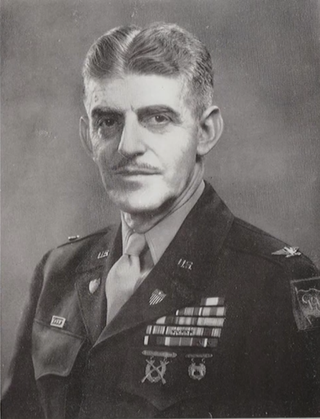
Sidney Forrester Mashbir was a senior officer in the United States Army who was primarily involved in military intelligence. Born in New York, he served in the Arizona Army National Guard during the Mexican-American Border War. Mashbir then held several posts in intelligence positions, taking credit for catching the first German spy in the United States, before departing for on a four-year assignment as a language officer to Japan in 1920. He resigned from the army in 1923 in an attempt to execute his own master plan devised to extract intelligence from Japan in event of a war. His plan failed as a result of the Great Kantō earthquake in September 1923 and he was left bankrupt; he consequently returned to the US as an engineering businessman.

During the Japanese occupation of the islands in World War II, there was an extensive Philippine resistance movement, which opposed the Japanese and their collaborators with active underground and guerrilla activity that increased over the years. Fighting the guerrillas – apart from the Japanese regular forces – were a Japanese-formed Bureau of Constabulary, the Kenpeitai, and the Makapili. Postwar studies estimate that around 260,000 people were organized under guerrilla groups and that members of anti-Japanese underground organizations were more numerous. Such was their effectiveness that by the end of World War II, Japan controlled only twelve of the forty-eight provinces.
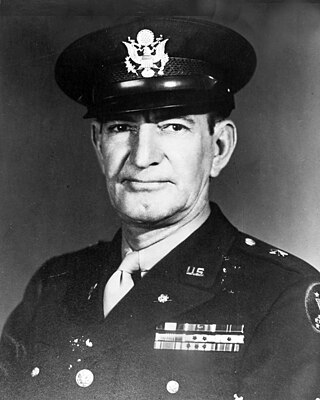
Brigadier General Kendall "Wooch" Jordan Fielder was an influential World War II officer in the United States Army, who served in Hawaii at the time United States' entry into World War II, and testified before Congress in favor of statehood.
References
- ↑ "Secret agent Arthur Komori". December 28, 2014. Archived from the original on January 2, 2015. Retrieved June 8, 2015.
- 1 2 3 4 "Arthur S. Komori, WWII spy, judge Information he collected posing as allied to Japan went to MacArthur's staff". Honolulu Star-Bulletin. February 19, 2000.
- 1 2 3 "Arthur S. Komori: Nisei Special Agent". The United States Army. May 17, 2013.
- ↑ "VA makes exception, OKs benefits for Komori". The Garden Island. November 20, 1999.[ permanent dead link ]